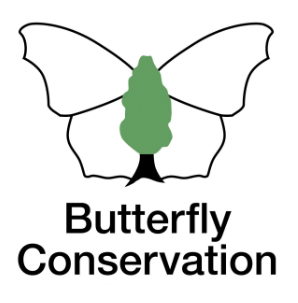Brown Argus
Brown Hairstreak
Chalkhill Blue
Clouded Yellow
Comma
Common Blue
Dark Green Fritillary
Dingy Skipper
Essex Skipper
Gatekeeper
Green Hairstreak
Green-veined White
Grizzled Skipper
Holly Blue
Large Skipper
Large White
Marbled White
Meadow Brown
Orange-tip
Painted Lady
Peacock
Purple Emperor
Purple Hairstreak
Red Admiral
Ringlet
Silver-washed Fritillary
Small Blue
Small Copper
Small Heath
Small Skipper
Small Tortoiseshell
Small White
Speckled Wood
Wall
White Admiral
White-letter Hairstreak
Extinct/rare immigrants
Orange-tip
Anthocharis cardamines
General Distribution and Status
The Orange-tip is widespread and common in Britain although it is local in the north of Scotland but even here numbers are said to be increasing. Generally, abundance and range have increased and expanded since the 1950s in spite of more intensive farming practices including extensive hedgerow removal on local sites. Perhaps the versatility of the females' selection of foodplants has helped in the butterfly adapting in a changing environment. Since 1976, both distribution and numbers have improved slightly. A similar situation arises in Hertfordshire and Middlesex where an upward trend in both range and abundance has materialised (Wood, 2016) although numbers have dropped slightly since the 2015-19 period.
| United Kingdom | Herts & Middx | |||
| Distribution | 1976-2019 | -1% | 1980-2015 | -14% |
| Average 10-year trend | -0.2% | 2006-2015 | +30% | |
| 2024 since 2015-19 | +3% | |||
| Abundance | 1976-2024 | +42% | 1980-2015 | -22% |
| 2015-2024 | +6% | 2006-2015 | +10% | |
| 2023-2024 | +4% | 2024 since 2015-19 | -50% | |
UK distribution map
UKBMS Species summary
Habitat Requirements
The species inhabits similar haunts to the Green-veined White with a preference for woodland edges, sunny hedgerows, roadside verges and damp fields. It is also much scarcer on dry chalky soils.
Larval Foodplants
Garlic Mustard Alliaria petiolata, Cuckooflower Cardamine pratensis. Other foodplants used include Hedge Mustard Sisymbrium officinale, Black Mustard Brassica nigra and Watercress Rorippa nasturtium-aquaticum (Sawford). In gardens, Honesty Lunaria annua may be used (Wood, 2016).
Adult Food Sources
Honesty Lunaria annua (152), Aubretia Aubretia deltoidea (115), Cuckooflower Cardamine pratensis (75), Sweet Rocket Hesperis matronalis (73).
Historical Records
Evidence suggests that the Orange-tip was a common butterfly at least since Victorian times. Locally, there were probable reductions where roadside verges were cut and hedgerows removed as part of farming practice or local authority control, perhaps more so in the arable north east of the county, but as noted above the state of the butterfly has remained relatively stable.
Local Distribution and Abundance
The Orange-tip is present in every tetrad as shown on the map. The largest concentrations appear to be in the Knebworth woods complex, Fairlands Valley Park and the field north of St Nicholas Church. The highest count of 33 was recorded by Ken King on his Knebworth Park transect on 9 May 2005. In 2019, the balmy weather in February saw emergence on 24 March in a Stevenage garden, beating the previous first sighting date by seven days. Unsurprisingly, the flight season ended early with only two records in June. Numbers were slightly below average in 2023 and 2024 doubtlessly can be explained due to inclement weather in the spring.

Stevenage (South Fairlands Valley Park) transect 1993-2025
The abundance of the Orange-tip does not align as well as other species with Hertfordshire as a whole. 1994 was a relatively poor year in the county but it proved to be the best here so local issues are probably the cause. The large majority of these butterflies were found in Whomerley Wood in that year when many of the rides were wide and open. In subsequent years, the open areas became overgrown and more shady making these unsuitable for the butterfly. Some coppicing and management in the wood in the last few years have reversed the downward trend. The years 2005 and 2011 were good as well as for the county. A fairly strong relationship exists between the abundance of the butterfly and rainfall in the spring, in that excessive rainfall adversely affects the species' abundance (Palmer et al.). Not too surprising perhaps as nearly all butterflies fly only in warm or sunny weather but the connection is apparently far stronger for this species than is the norm. The wet and cool spring in 2024 is a good example. However, in 2021 the very cold weather in April which is when the butterfly usually emerges must have had a detrimental effect.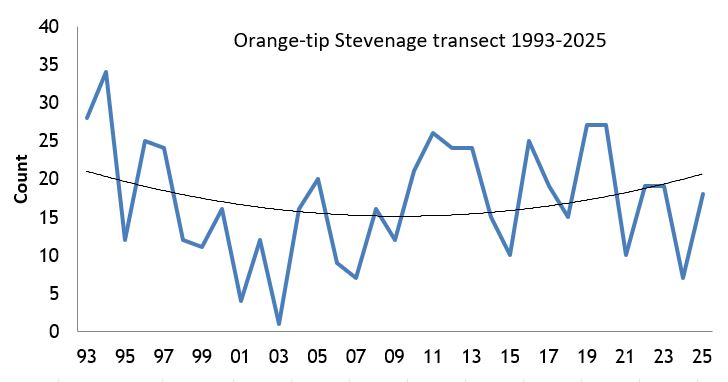
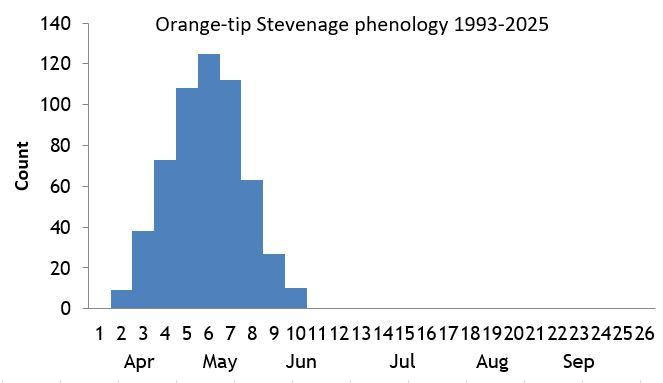
Knebworth Park transect 1996-2010 and 2017-2025
The status of this species appear to be relatively stable here although numbers fell in 2020 after a run of three years of increasing numbers since the resumption of the transect. Another significant drop followed in 2021. Numbers picked up slightly since then but still fairly relatively low.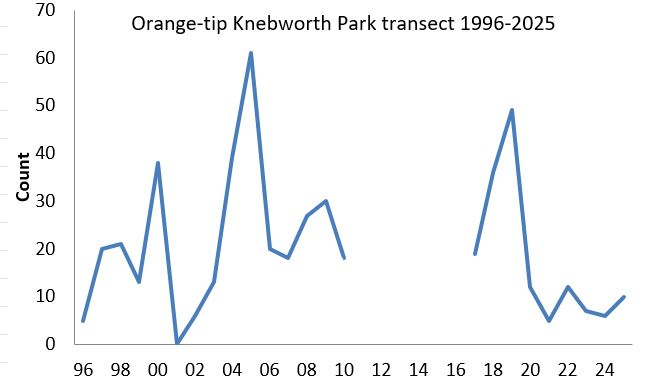
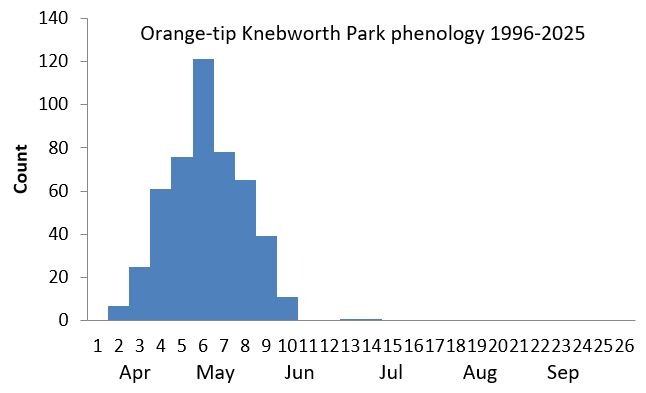
Knebworth Woods transect 2017-2025
Fairly common especially in the open areas like Norton Green Common although numbers have dropped markedly since 2020. More were seen in 2025 aided by the warm and dry spring.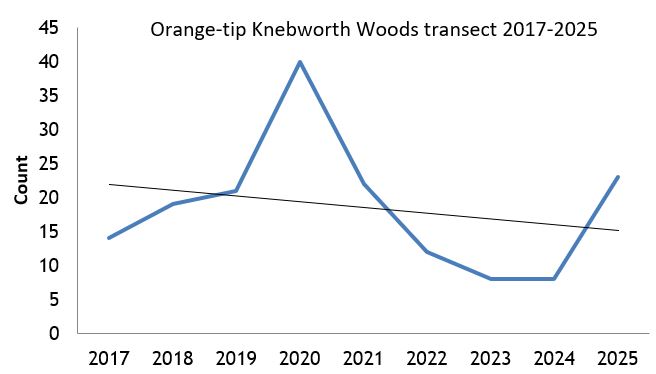

Pryor's Wood transect 2000-2022
One or two specimens are seen in most years; three were reported in 2017.Life History
Earliest date: 24 March 2019 at Stevenage
Latest date: 6 July 2005 at Knebworth Park
The Orange Tip overwinters as a pupa
often away from the foodplant the larva was feeding on. It has been reported that a few pupae undergo diapause for more than one winter but it is unknown what
causes this. Adults usually start emerging in the middle of April and numbers hitting a peak during the second week
of May. Only one generation is produced each year but in warm summers a partial second brood may result. Although no such brood has been recorded in the
Stevenage area during the survey there are examples elsewhere in Hertfordshire. Eggs are laid singly either on the stem or on flowerheads and when they soon
turn orange, are one of the easiest eggs to find in the wild. The larvae may become cannibalistic by eating other eggs or smaller larvae on the same
plant.
Behaviour/Observation notes
Male Orange Tips normally emerge before the females and are very active in the early stages when searching for mates. Towards the peak flight period, both sexes should be easier to approach for close-up views and particularly so earlier in the day when it is cooler (Riley).
Variations/Aberrations
The most common variations appear to be the nature of the discoidal spot and the colour of the tip. I found one possible aberration ab. pupillata
where the discoidal spot is pupilled but it can be argued that this example may fall within the realms of natural variation.
Find out more on the UK Butterflies website
References
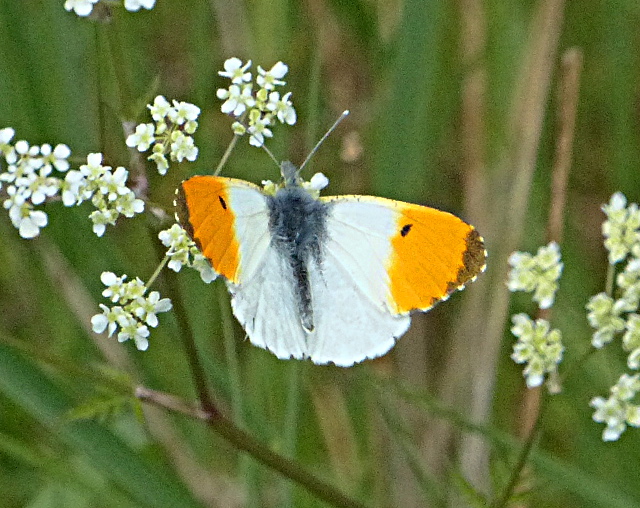
Near St Nicholas church 23 May 2016 (m)

Burleigh Farm 21 May 2015 (f)
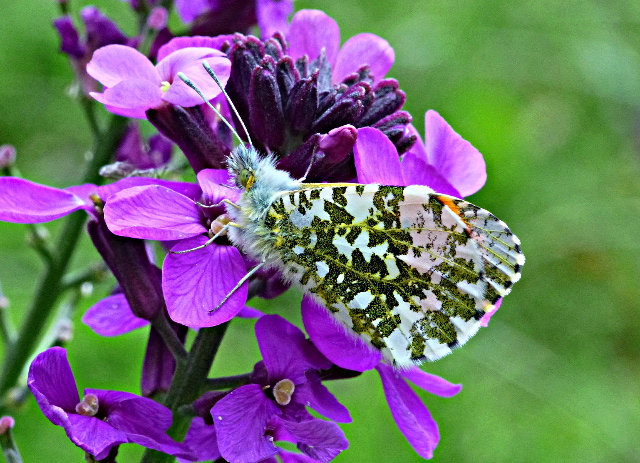
Stevenage 28 Apr 2017
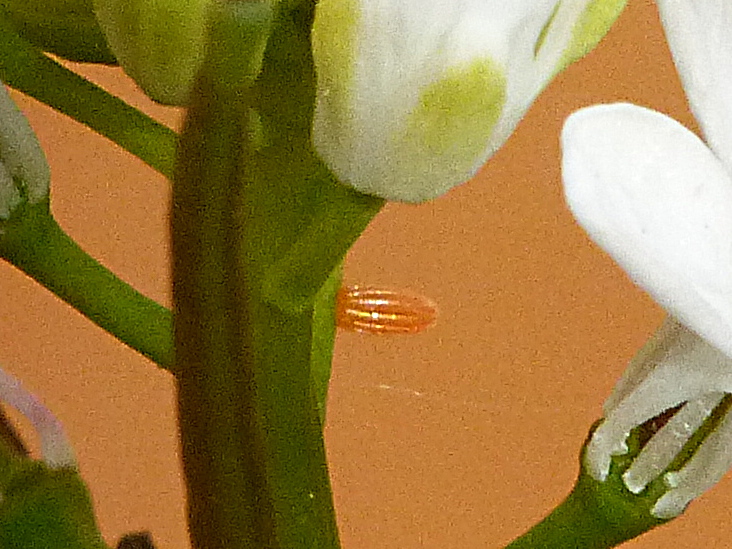
Egg Stevenage 11 May 2018
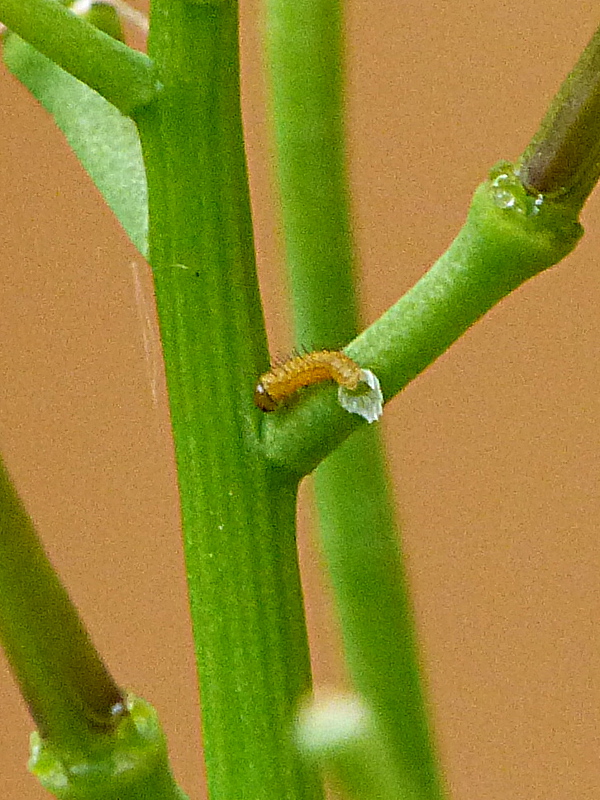
Larva Stevenage 14 May 2018
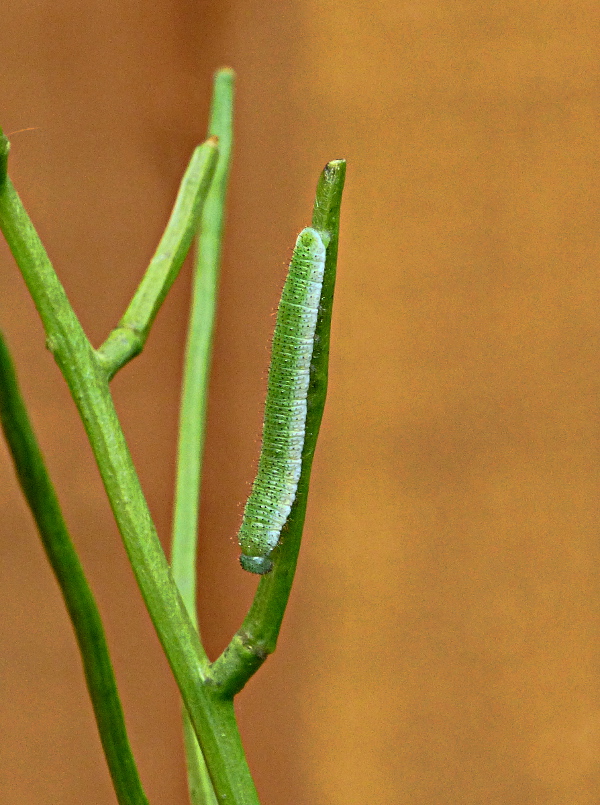
Larva Stevenage 31 May 2018
